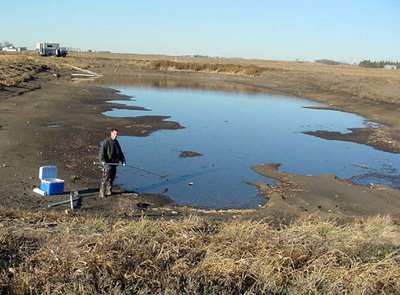As you may have read in the previous post, the NC Utilities Commision held a public hearing last night, Jan 10, for the purpose of hearing public comments on Duke Energy's $3 billion price tag for two new coal-fired power plants 55 miles west of Charlotte.
About 300 people showed up to protest construction of the plants! The hearing was preceded by a press conference outside, during which several scientists and activists and general folks spoke of their opposition to the air pollution and greenhouse gases and mountaintop destruction caused by coal. A lot of local people worked hard to organize this resistance, including the Sierra Club and the Clean Air Coalition. (Click on these orgs for more info about coal and the Duke campaign.) I am grateful for the hard work of everyone involved. It inspires me.
After the press conference, those who wanted to speak at the hearing signed up on a sheet of paper, and the utility commissioners called their names one by one. Each person had 3 minutes to speak. Soon after we got started, the police came in to force some of the attendees out of the hearing room, saying it was too crowded for safety. So 100-200 people had to hang around outside the room.
I signed up to speak, and I enjoyed it thoroughly. My comments to the Utilities Commission are below:
My Message to the Commissioners
"I understand that this hearing is about the 'cost effectiveness' of spending $3 billion on Duke Energy's new Cliffside coal plants. To my way of thinking, $10 would be too much to spend on a new coal plant.
"I don’t understand why this discussion of 'costs' is limited to rate hikes and Duke Energy’s construction costs. What about the broader costs to future generations? What about the cost in agricultural productivity lost to global warming? What about the costs of entire coastal cities flooded by rising ocean levels?
"The cost that concerns me most, as a biologist, is the loss of wildlife species.
"More than 70% of the nation’s biologists believe we are in the midst of a worldwide mass extinction of wildlife. A mass extinction is defined as a catastrophic global event in which 25 to 75% of existing species are wiped out. The main cause of this mass extinction is habitat loss and environmental damage.
"What is the single biggest threat to the environment?
"Global warming. A change of just a few degrees in temperature can completely change rainfall patterns, or soil organisms, or plankton populations – any of which can alter the dynamics of an ecosystem, or cause it to collapse altogether.
"Global warming threatens much more than wildlife. In sub-Saharan Africa, a region struggling with desperate and increasing poverty, the rainy season has been shortened by global warming. There's less snow on the mountaintops, lakes are much lower, and when the rain finally does come, it falls too hard and fast and sweeps away the precious topsoil that farmers need to plant their harvests.
"While Americans are still arguing about whether climate change is a problem, European government officials and business leaders agree with scientists worldwide that global warming is the single greatest problem facing humankind in 5,000 years of civilization.
"Europeans are busy looking for solutions and making plans while we debate. Great Britain has 30-year plans to build levees and dikes to prepare for rising waters as the polar ice caps melt. Britain may lose three-fifths of its farmland as the oceans rise.
"Meanwhile Duke Power proposes to build two new coal plants that will crank out ever more greenhouse gases. No amount of scrubbers will take CO2 out of a coal plant’s emissions. What’s even scarier, CO2 emissions are not even regulated here in the United States. Even though the U.S. is the world’s largest contributor to greenhouse gases.
"We don't need more coal plants. With adequate incentives for consumers to adopt more energy-efficiency measures, and with renewable green sources of energy, we could meet all of our energy needs without new power plants. In fact, we could even begin to see some of these power plants retired or taken off line.
"If we want to save the world’s habitats and wildlife species, as well as our agricultural lands, we need to say no right now to coal and yes to energy efficiency and clean power."
You Can Still Speak Your Piece
June Blotnick of the Clean Air Coalition has emailed me the following information:
For everyone else who would like to give their opinion to the NC Utilities Commission, please send your comment in writing by next Friday January 19. It doesn’t have to be long or technical—just your view on why investing $3 billion in the new Cliffside coal-fired power plants is wrong for meeting NC's energy needs. For more information, go to www.clean-air-coalition.org. Comments should be sent to: NC Utilities Commission, Re: Docket E7, Sub 790 (Cliffside), 4325 Mail Service Center, Raleigh, NC 27699-4325.
As several speakers referred to last night, there is an open docket on the Renewable Portfolio Standard (RPS) study that the Utilities Commission ordered last year to determine how much of North Carolina’s energy needs can be met through renewable sources of energy and energy efficiency. Keep an eye on this blog next week for talking points for that important issue. Comments are due soon. We need folks to impress upon state officials the massive public support for these two clean air strategies.
We also need folks to write letters to the editor. This is an easy way to get coverage of the issues out to the public on a regular basis. If we’re serious about building a movement for clean energy, we need to regularly remind the public that there are lots of people in the region who support it. For the Charlotte Observer, letters should be limited to 150 words and emailed to opinion@charlotteobserver.com.
June says thanks to all the people who worked hard to organize attendance and speakers for the hearing last night, including Beth Henry, Diane Frederick, Isabella Lacki, Kelly Picarsic, Todd Glasier, Brian Staton, Chatham Olive, Bill Glass, John Autry, Alan Burns, and Ken Davies. I agree, and say thanks to June, too, the Executive Director of the Carolinas Clean Air Coalition. You all give me hope.
KEYWORDS:: COAL DUKE ENERGY NORTH CAROLINA NC UTILITIES COMMISSION PUBLIC HEARING CLIFFSIDE POWER PLANT RENEWABLE ENERGY RENEWABLES ENERGY EFFICIENCY SIERRA CLUB CAROLINAS CLEAN AIR COALITION GLOBAL WARMING GREENHOUSE GASES CARBON DIOXIDE AIR POLLUTION MERCURY EMISSIONS



















